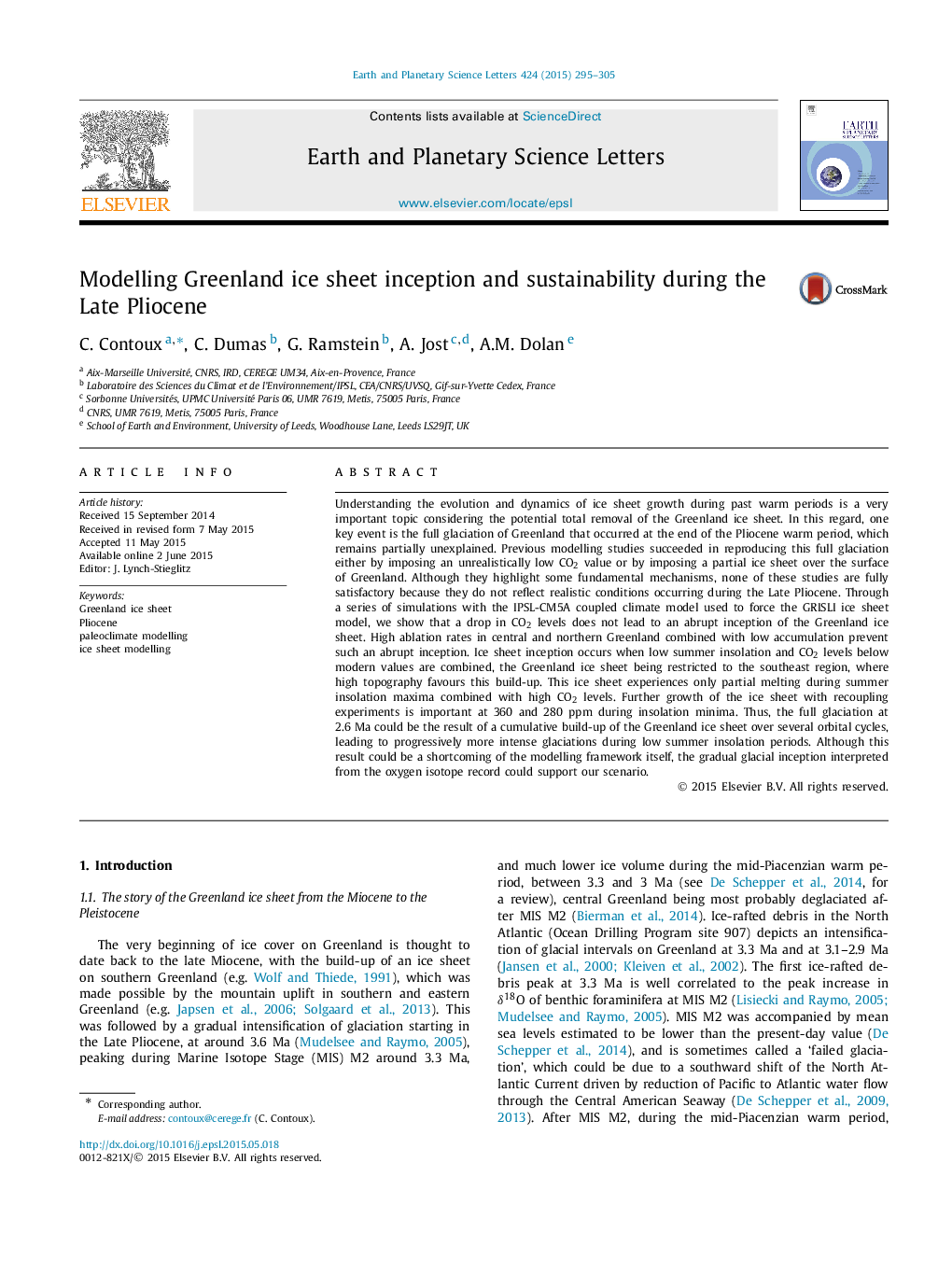| کد مقاله | کد نشریه | سال انتشار | مقاله انگلیسی | نسخه تمام متن |
|---|---|---|---|---|
| 6428254 | 1634732 | 2015 | 11 صفحه PDF | دانلود رایگان |
- We investigate which conditions lead to Greenland ice sheet inception during the Pliocene.
- We show there is no ice sheet inception unless combining low summer insolation and CO2 levels below modern values.
- We show that ice sheet is restricted to East and South mountainous regions.
- We suggest Greenland ice sheet inception was a long term, cumulative process rather than abrupt one.
Understanding the evolution and dynamics of ice sheet growth during past warm periods is a very important topic considering the potential total removal of the Greenland ice sheet. In this regard, one key event is the full glaciation of Greenland that occurred at the end of the Pliocene warm period, which remains partially unexplained. Previous modelling studies succeeded in reproducing this full glaciation either by imposing an unrealistically low CO2 value or by imposing a partial ice sheet over the surface of Greenland. Although they highlight some fundamental mechanisms, none of these studies are fully satisfactory because they do not reflect realistic conditions occurring during the Late Pliocene. Through a series of simulations with the IPSL-CM5A coupled climate model used to force the GRISLI ice sheet model, we show that a drop in CO2 levels does not lead to an abrupt inception of the Greenland ice sheet. High ablation rates in central and northern Greenland combined with low accumulation prevent such an abrupt inception. Ice sheet inception occurs when low summer insolation and CO2 levels below modern values are combined, the Greenland ice sheet being restricted to the southeast region, where high topography favours this build-up. This ice sheet experiences only partial melting during summer insolation maxima combined with high CO2 levels. Further growth of the ice sheet with recoupling experiments is important at 360 and 280 ppm during insolation minima. Thus, the full glaciation at 2.6 Ma could be the result of a cumulative build-up of the Greenland ice sheet over several orbital cycles, leading to progressively more intense glaciations during low summer insolation periods. Although this result could be a shortcoming of the modelling framework itself, the gradual glacial inception interpreted from the oxygen isotope record could support our scenario.
Journal: Earth and Planetary Science Letters - Volume 424, 15 August 2015, Pages 295-305
